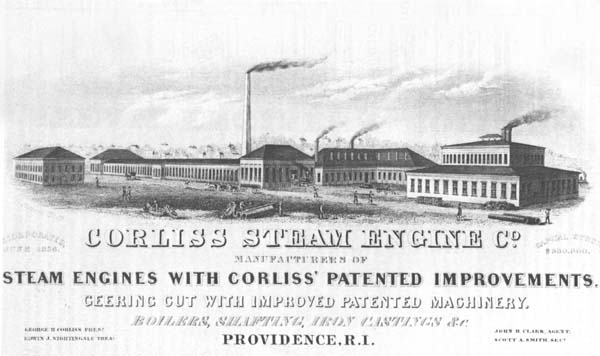April 19, 2023
Nathanael Herreshoff, Steam Engineer: The MIT Years
An expanded and updated account of Nathanael Herreshoff's time as an undergraduate
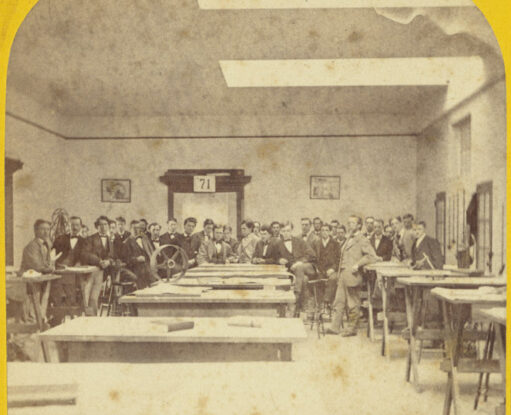
by Jim Giblin

On October 4, 1866 following his graduation from Bristol, Rhode Island High School in June of 1865 Nathanael Herreshoff began classes at the Massachusetts Institute of Technology as a special student for a three year course in mechanical engineering. 1866 was only the second full MIT academic year and classes that fall were the first to be held in the schools new building located on Boylston St. between Clarendon and Berkeley Streets in Boston's Back Bay. The first full academic year began in October of 1865 with classes conducted in rented rooms of the Mercantile Hall on Summer St. in downtown Boston. Before moving to Cambridge in 1916 MIT was very often referred to as “Boston Tech”. There were 27 special students and 64 regular four year degree candidates admitted to “Tech” in the fall of 1866. In the early days of MIT the “specials” made up about thirty to forty percent of the MIT student body.
During his first and second years at MIT Nathanael roomed at 4 Boylston Place, a 10 minute walk to classes. During his last year he roomed at 20 Boylston St, a slightly longer 15 minute walk. Both locations were only a short walk to the railroad connections for Providence and Bristol.
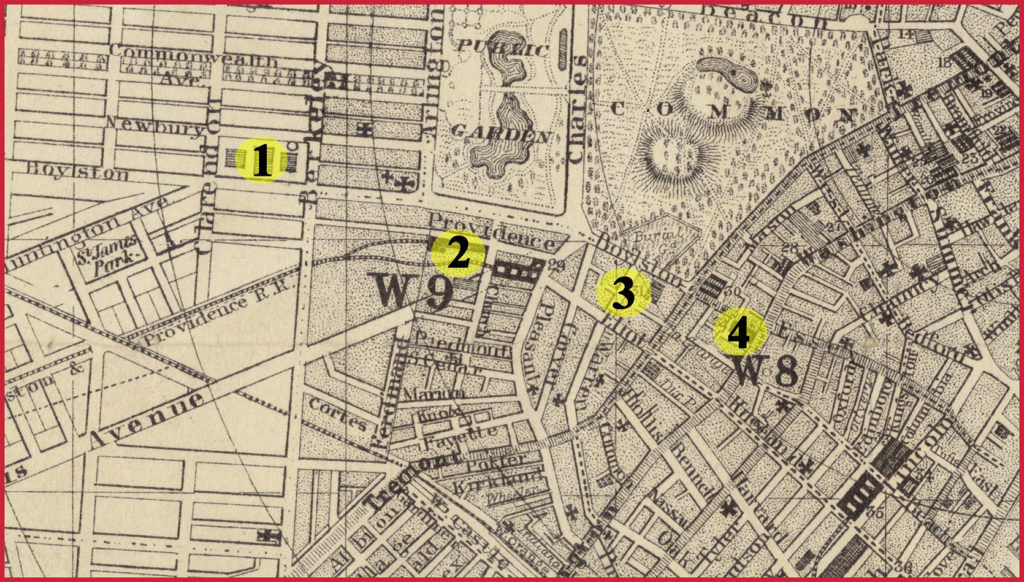

While the course catalogs for the years Nathanael attended MIT define in detail the mechanical engineering curriculum for regular students, it is not possible to state with certainty the courses Nathanael may have taken. As a special student he had flexibility to select his courses, provided he demonstrated the prerequisite knowledge. This is conjecture but it is likely he was able to pass over some of the language requirements of the regular student curriculum and concentrate on the technical courses and thus in his third year take many of the fourth year mechanical engineering courses. Nathanael did not have the opportunity to study either Marine Engineering or Naval Architecture as MIT did not offer courses in those subjects at the time. The first courses in Marine Engineering were offered in 1886, and the first lectures in Naval Architecture offered in 1889.
The fees for special students were also flexible. For the academic year 1866-67 the attendance fee for regular students was first year $100, second year $125, third and forth years $150. The fee for special students was based upon the length and number of courses chosen.
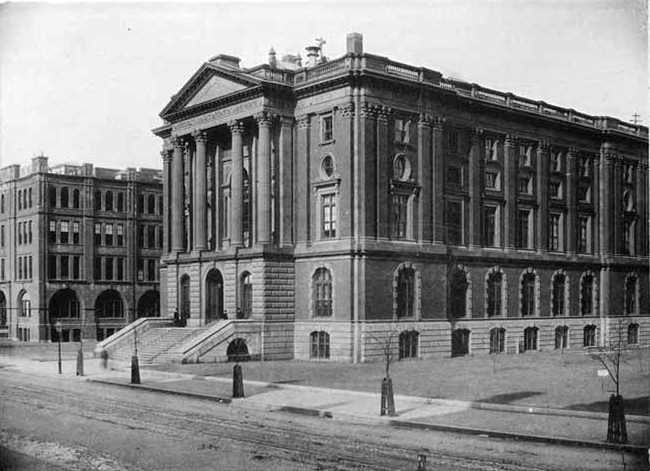
The MIT academic year began on the first Monday of October and ended on the Saturday preceding the first Monday in June. There were no classes on legal holidays but no other scheduled breaks. Weekday classes of one hour duration were held from 9 am to 1 pm then following the mid-day meal from 3 pm to 5 pm. Afternoon laboratory classes were normally two hours in length. Saturday classes were held from 9 am to 11 am. As a land grant college MIT was required to provide some form of military training, which was conducted on Saturdays from 11 am until noon. It is clear all regular students were expected to participate in the military training. It is not clear if special students were exempt, but that may have been the case. During Nathanael's time at MIT military training was judged ineffective and thought a waste of time by the students.
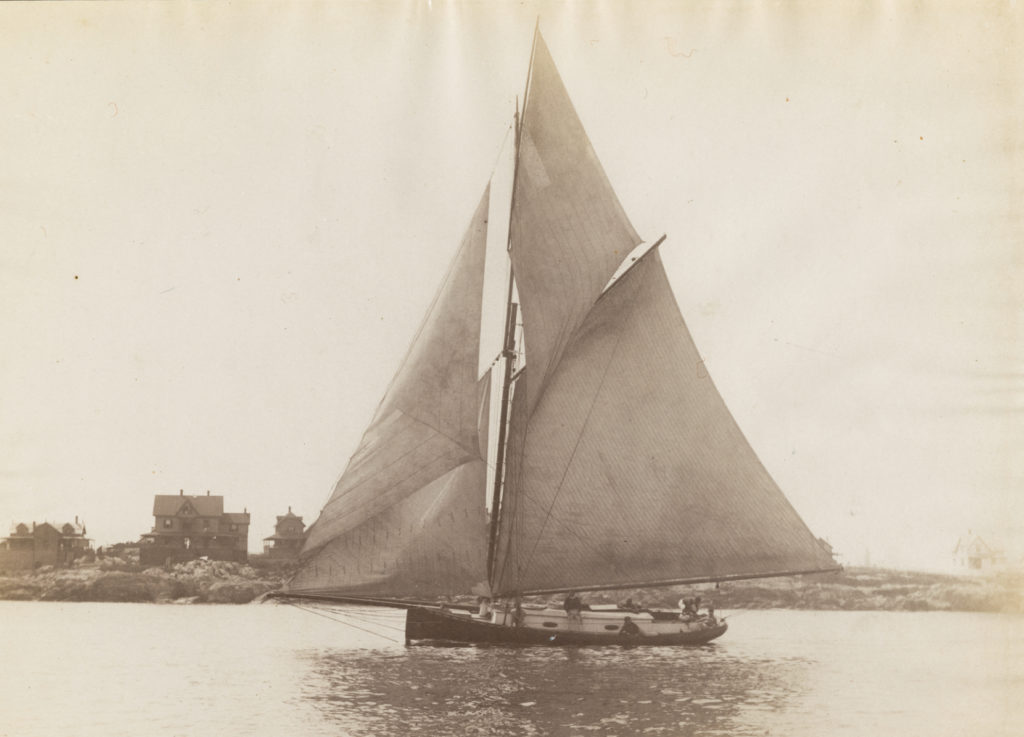
During his studies at MIT Nathanael remained involved in yachting and was invited to the first meeting of the Boston Yacht Club in November 1866 and then elected a member at the club's second meeting in December. Dexter Stone who for a short time had been a partner in Nathanael's brother John's boat building business was a founding member of the club and later served as the club's measurer. Eben Denton - owner of the yacht VIOLET, modeled by Nathanael and built in 1866 - was also a founding member. Both these men would certainly have been well aware of Nathanael's abilities both as a helmsman and designer. Soon after becoming a member Nathanael was requested by the club to develop a measurement formula and time allowance rules for handicapping the various sized yachts in the clubs races. The resulting direct reading time allowance tables were first issued in 1867 and remained in wide use for well over a century. It is truly remarkable to think an 18 year old college student was recognized to have the necessary mathematical skills and understanding of sailing yacht performance to be assigned such a task.
Nathanael resigned from the Boston Yacht Club upon leaving MIT in 1869 but was made an honorary member in February 1877 and served as Rear Commodore in 1891.
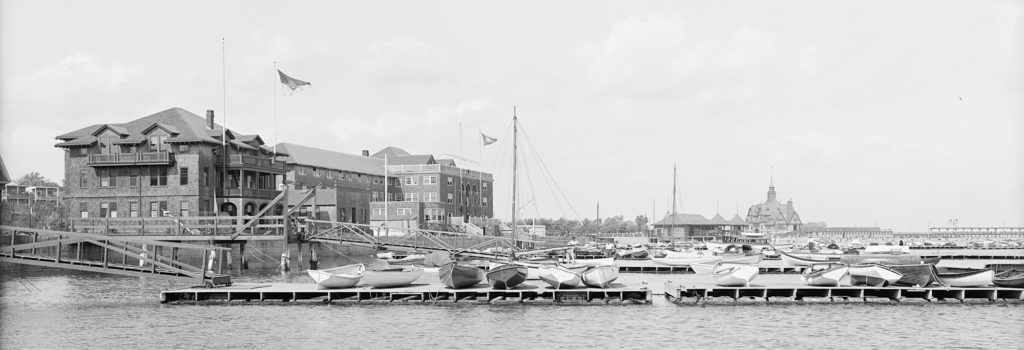
In 1931 in response to an Edison Institute of Technology request for biographical information Nathanael related what was obviously a most memorable college experience:
“An incident occurred while at Tech that put me quite in the limelight at the Institution. One day in the analytical geometry class I told the Professor of a curve I had used in constructing a rotary engine I had designed and built, when I was 16. He became very much interested and spoke of it to President Rodgers, and I was asked to exhibit it before the Society of Arts that held a meeting fortnightly in the M.I.T. building. So I had it sent from home and had it connected to run by steam at the next meeting of the society and got great applause from the audience and a very complementary talk from President Rodgers.” It was unusual and a great honor for an undergraduate to present to The Society of Arts and was certainly something of which Nathanael remained justly proud.
Nathanael exhibited his rotary steam engine model at the May 7, 1868 meeting of the Society of Arts. Physics Professor Pickering presented, on Nathanael's behalf, a description of the engine. The minutes record:
“The advantage claimed for it consists in its extreme simplicity. The main shaft carries a single sliding plate, or piston, which revolves in a cavity, so formed, that both ends of the piston shall always be in contact with its sides. The plan adopted for boring the cylinder was also explained; although not circular, it was turned on a common lath by giving a double motion to the cutter. The same form of machine appears especially suitable for a pump or water pressure engine from its compactness and the fact it is made of but five pieces. The working model exhibited was made by Mr. Nathanael Herreshoff himself.
The president alluded to this specimen as illustrating an important function of the institute: to develop and direct for practical purposes the mechanical talent of students of industrial science; and he thought the model exhibited was not only creditable to the pupil but must be as gratifying to the Society of Arts as it was to the faculty of instruction in the institute.”

At the Society of Arts meeting of March 4,1869, Nathanael, with 85 people present, operated his rotary engine on steam. Those minutes record: “Mr. Nathl. G. Herreshoff a pupil of the Institute exhibited in operation with steam a form of rotary engine he devised and made by himself. It was described at a meeting of the Institute May 7, 1868. The interior arrangement was described by drawings on the blackboard. The number of revolutions made per minute was ascertained to be 2000 as shown by an ingenious apparatus also the invention of Mr. Herreshoff.” *
Based upon the above descriptions of Nathanael's engine it appears conceptually similar to the very much later Wankel internal combustion engine. As a steam driven rotary machine run at those rpm, it might be described as half steam turbine and half steam engine.
While at MIT Nathanael continued modeling (designing) hulls for his brother John's boat building business and in the winter of 1867-68 modeled John's first steamer the ANNIE MOIES. Although no drawings appear to exist Nathanael may also have been responsible for her machinery arrangement. ANNIE MOIES engine and boiler were purchased from Wright & Smith of Newark,NJ. She was launched on April 13, 1868 and trialed the following day. In May 1868 Nathanael modeled a steamer for Wright & Smith from which John later built two hulls. A drawing in the Haffreneffer-Herreshoff Collection at the MIT Museum of a two blade propeller for the ANNIE MOIES signed Nathl. Herreshoff is dated February 19th 1869. This drawing done nearly a year after her launching while Nathanael was still a student must therefore have been a replacement for her original wheel. While Nathanael was at MIT both his father, Charles Frederick, and brother John continued to model and build an increasing number of boats for themselves and customers.
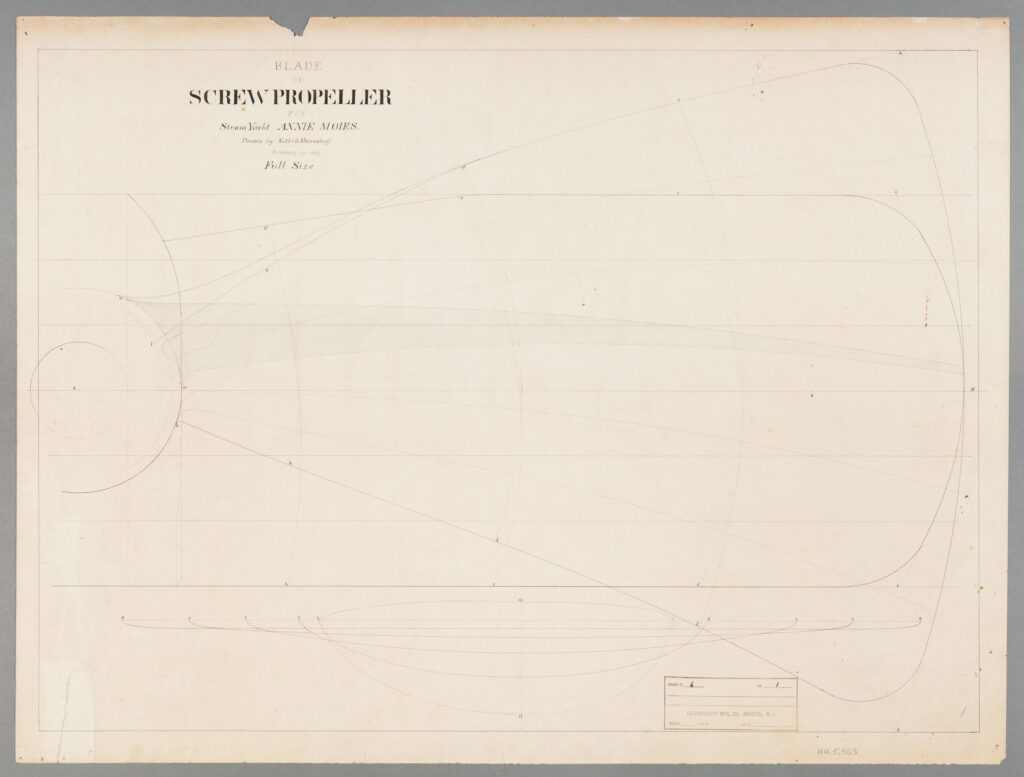
Nathanael spent the summers of his college years racing his brother John's sloops CLYTIE and SADIE in both New York and Boston waters with great success. Nathanael had modeled CLYTIE in 1866 before beginning classes at MIT, SADIE was modeled by his brother John.
Nathanael completed his studies at MIT on the fifth of June 1869 and accepted a position with the Corliss Steam Engine Company in Providence Rhode Island.
I have not been able to determine how Nathanael obtained this position. One account states Nathanael became acquainted with George Corliss at the Boston Yacht Club which led to a job offer with the Corliss Steam Engine Company in Providence, Rhode Island. Although George Corliss does not appear to have been a member of the Boston Yacht Club and was not involved with boating it is certainly possible a club member provided a recommendation or introduction which led to a job offer. Other possibilities exist; for example, MIT required students to visit industries and shops within convenient reach of the school to provide an immediate connection between what they learned in school and what they observed in the industrial establishments associated with the professions for which they were preparing. The Corliss Steam Engine Company in Providence is listed in the MIT course catalog as one of the companies visited, and so it is possible George Corliss met Nathanael on such a visit or through some other MIT connection. The Herreshoff family was also acquainted with Mr. and Mrs. John Houghton of Providence and it may well have been Mr. Houghton, a foreman at Corliss, who brought Nathanael to the attention of George Corliss.
The MIT alumni records indicate that after forming HMCo. with his brother John, Nathanael hired several MIT mechanical engineering and naval architecture graduates. These would all have been graduates of the regular four year program as special students are not listed as alumni. It is likely he also hired individuals who had attended as special students. The most notable of the MIT alumni to work at the HMCo. was George Owen who would later become well known for his own yacht design work and even later as a professor of Naval Architecture at MIT. George Owen was particularly well known for his P, Q and R class racing yachts designed to Nathanael's Universal Rule.
In in his 1895 Annual Report the President of MIT lauded Nathanael for the design and construction of the America's Cup yacht DEFENDER. It is interesting that in this report the President credited Nathanael to the class of 1870 although he finished at MIT in 1869 and special students are not listed as members of any class in the published alumni records of the time.
* Massachusetts Institute of Technology, Society of Arts Records, AC 11, box 3 vol. 3. Massachusetts Institute of Technology, Institute Archives and Special Collections, Cambridge, Massachusetts.
Author's Note: Certificates of Attainment, rather than diplomas, were awarded to the special students following examinations to demonstrate their proficiency in their field of study.
Three of Nathanael's sons would later attend MIT and all roomed at 64 Commonwealth Ave, a five minute walk to MIT.
A. Sidney DeWolf Herreshoff: 1907-8 listed as a first year Regular Student,
1908-9 listed as a Special Student, Nav. Arch.
1910-11 listed as a Special Student, Nav. Arch
A. Griswold Herreshoff : 1908-9 listed as a Special Student
1909-10 listed as a Special Student, Nav. Arch.
1910-11 listed as a Special Student, Nav. Arch
Nathanael Greene Herreshoff Jr.: 1908-9 listed as a first year Regular Student
Jim Giblin is a retired mechanical engineer, independent researcher, and long-time friend and supporter of the Museum. He is based in Noank, CT.

